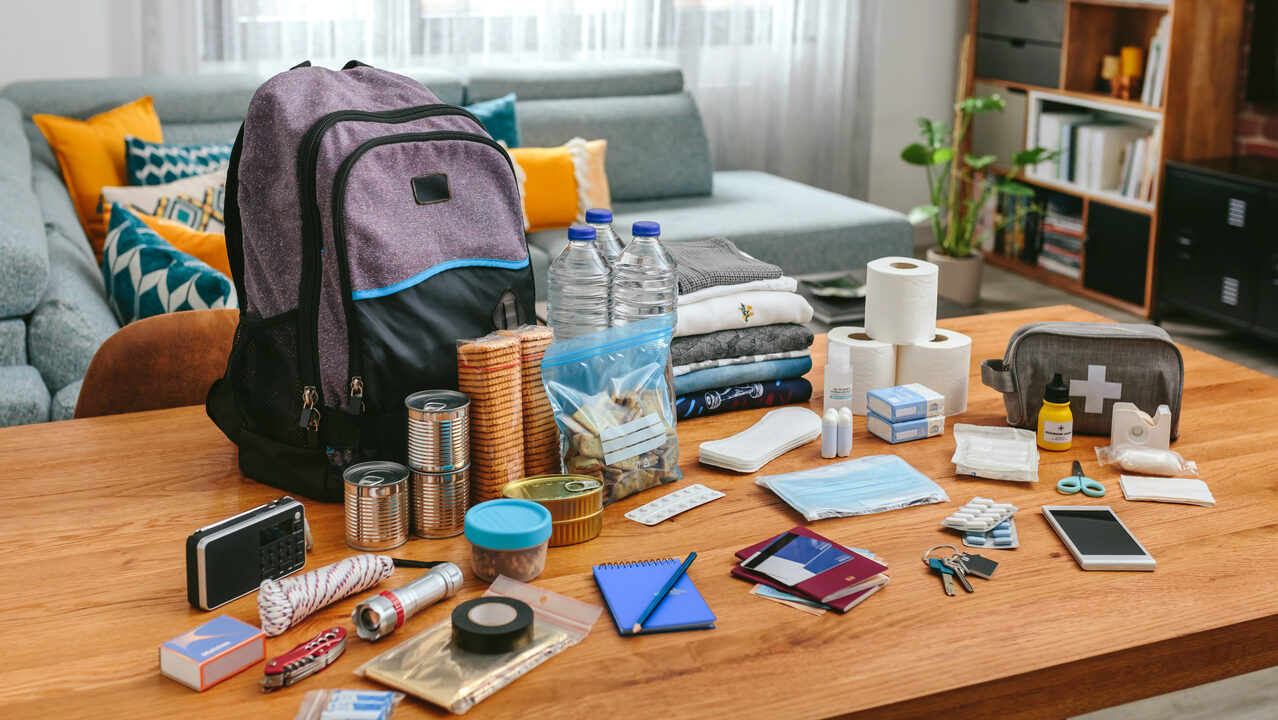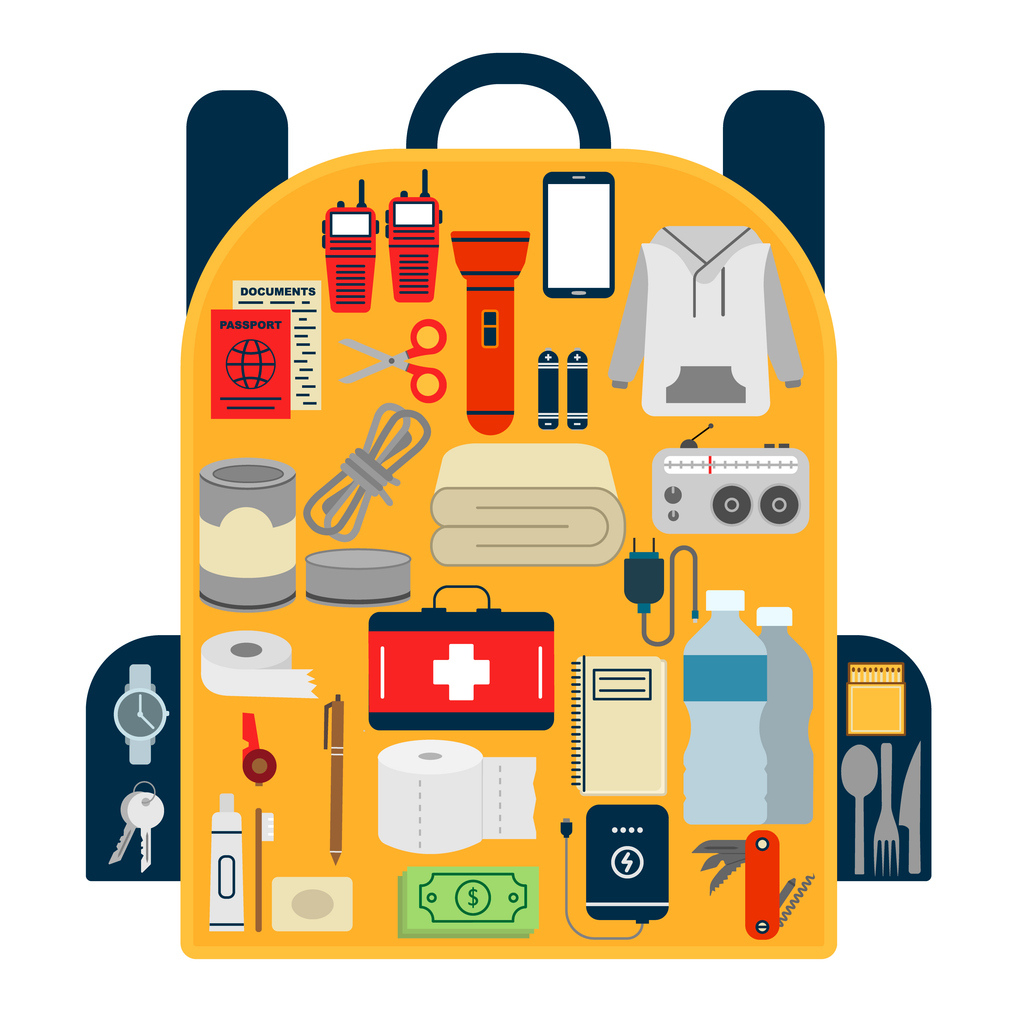Emergencies don’t wait for a convenient time, and when disaster strikes, having a well-prepared grab bag can make all the difference. Whether it’s a flood, earthquake, power outage, or other emergency, a grab bag ensures you and your whānau have the essentials to stay safe and mobile.
The Papakura Emergency Readiness and Response Plan emphasises the importance of being prepared, knowing your hazards, and planning ahead. A personalised grab bag means tailoring your emergency kit to fit your family’s unique needs—because no two households are the same.
Here’s how to build a grab bag that will keep you covered for at least three days.
Step 1: Essentials for Everyone
Every grab bag should have the basics to help you survive in an emergency. According to the Papakura Emergency Readiness and Response Plan, your kit should include:
✔️ Water & Food: At least nine litres of water per person for three days (about three litres per day). Pack high-energy, non-perishable snacks like muesli bars, dried fruit, and nuts.
✔️ First Aid Kit: Bandages, antiseptic wipes, painkillers, and any prescription medication you or your whānau need.
✔️ Clothing & Warmth: Warm socks, a hat, gloves, extra underwear, and a rain poncho. Thermal blankets are lightweight and can be life-saving.
✔️ Light & Power: A torch and spare batteries, plus a power bank to keep your phone charged.
✔️ Hygiene: Wet wipes, hand sanitiser, a small towel, toothbrush, and toothpaste.
✔️ Important Documents: Copies of passports, ID, insurance details, medical prescriptions, and emergency contact numbers.
✔️ Cash: ATMs and EFTPOS machines may not work in a power outage, so keep small bills and coins handy.
CRN Tip: Keep your grab bag light and easy to carry—a backpack is ideal!
Step 2: Personalising for Each Family Member
Every household is different, and each person has specific needs. Here’s how to customise grab bags for every member of your whānau.
For Kids 👶🎒
Children need extra care and comfort during emergencies. Make sure their bag includes:
✔ Their favourite snacks and drinks.
✔ A small toy, stuffed animal, or blanket for comfort.
✔ A colouring book and crayons for distraction.
✔ Extra nappies, wipes, and formula (for babies).
✔ A spare set of clothes, including warm layers.
CRN Tip: Get kids involved in packing their own grab bags! Let them choose their comfort items—it makes the process fun and gives them a sense of security.
For Pets 🐶🐱
Your furry whānau members need their own supplies too!
✔ Pet food and water (enough for at least three days).
✔ A leash, collar, and ID tag.
✔ A pet carrier or blanket for transport.
✔ Any necessary medication and vaccination records.
✔ Poop bags or a small litter tray for hygiene.
CRN Tip: If you need to evacuate, bring your pets with you—if it’s not safe for you, it’s not safe for them!
For Elderly or Disabled Family Members 🦽
If you have elderly or disabled whānau, their grab bag should include:
✔ Extra medication and copies of prescriptions.
✔ Mobility aids (like a spare walking stick or wheelchair instructions).
✔ Hearing aid batteries.
✔ A personal emergency plan with key contacts.
Step 3: Special Considerations
Weather Conditions 🌦️
Papakura’s climate is unpredictable, so prepare for all seasons:
✔ Sunblock, sunglasses, and a hat for hot weather.
✔ Thermal blanket and gloves for cold conditions.
✔ Waterproof jacket and extra socks for wet weather.
Longer-Term Emergency Supplies ⏳
If you live in a flood-prone or earthquake-prone area, add:
✔ A small cooking stove with a gas canister.
✔ Multi-tool or Swiss Army knife.
✔ Water purification tablets.
CRN Tip: Check the Auckland Hazard Viewer to see if your home is in a risk zone.
Step 4: Keep It Updated & Accessible
Now that your grab bag is packed, follow these final steps to stay prepared:
✔ Check and refresh your supplies every six months—swap out expired food, batteries, and medications.
✔ Store your bag in an easy-to-grab location, like near the front door or in your car.
✔ Have one grab bag per person so no one is left unprepared.
✔ Practise evacuation drills with your whānau so everyone knows what to do in an emergency.
CRN Tip: A Community Emergency Hub is the best place to connect with others in a disaster. Find yours here.
Final Thoughts
Building a personalised grab bag is one of the easiest and most important things you can do to keep your whānau safe. It’s not just about survival—it’s about being ready to face emergencies with confidence.
Have you built your grab bag yet? Share your top tips or photos of your setup in the comments below! Let’s make Papakura a disaster-ready community!





0 Comments